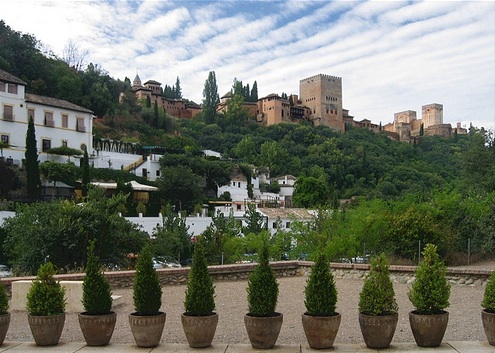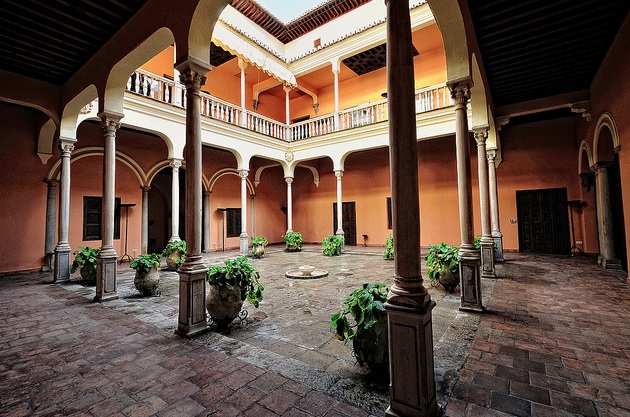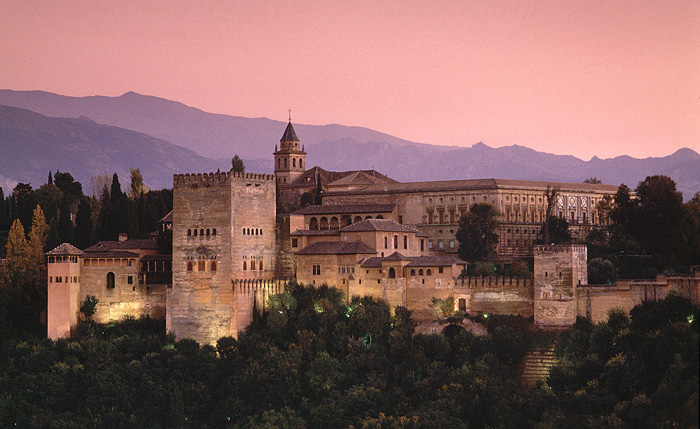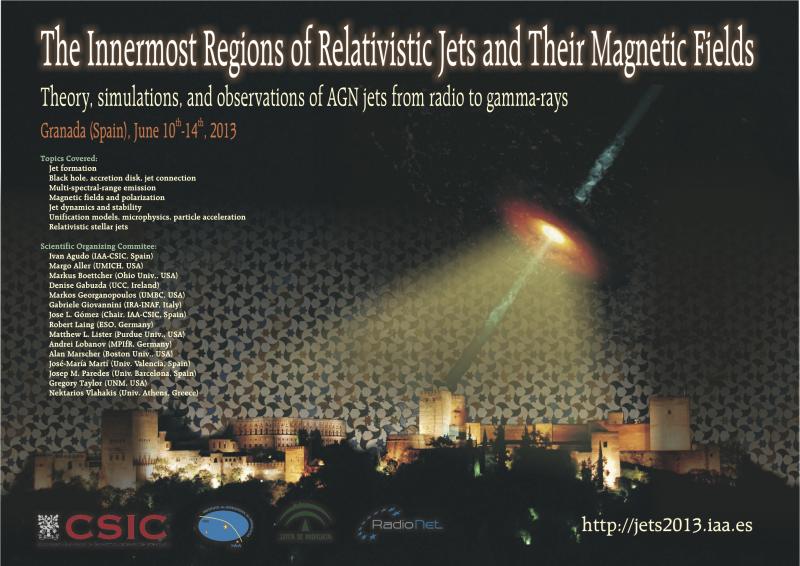The Innermost Regions of Relativistic Jets and Their Magnetic Fields. Granada (Spain). June 10th-14th, 2013.
Social events
 Welcome reception
Welcome reception
A welcome cocktail will take place at one of the outdoor areas of Nazaríes Hotel on Sunday, June 9th at 20:00h. All participants are invited to attend.
Conference dinner
The conference dinner will take place on June 13th, 2013 at the gardens of Palacio de los Córdova, a 16th century palace just in the foot of the walls of the Alhambra. The price of the conference dinner, should you wish to attend, is 50€ per person. Registration for the conference dinner (for conference participants and any accompanying person) can be paid together with the registration for the conference.


Guided tour to the Alhambra
June, Wednesday 12th, during the afternoon.
Price: 35€
There will be no scientific sessions for Wednesday afternoon, so that we have organized a guided tour to the 10th century Alhambra palace. A bus will take participants from Hotel Nazaríes to the Alhambra. The price for the tour will be 35€ and can be paid (both for you and your companion if any) within the conference registration process.
The Alhambra, the most emblematic monument of Granada, nominated UNESCO World Heritage Site, was started to be constructed during the mid 10th century by the Berber ruler Badis ben Habus of the Kingdom of Granada in al-Andalus, occupying the top of the hill of the Assabica on the southeastern border of the city of Granada.
The Alhambra's Islamic palaces were built for the last Muslim Emirs in Spain and its court, of the Hasrid dynasty. After the Reconquista (reconquest) of Granada by the Reyes Católicos ("Catholic Monarchs") ten months before Columbus' journey to America, some portions were used by the Christian rulers. The Palace of Charles V, built by Charles V, King of Spain and Holy Roman Emperor in 1527, was inserted in the Alhambra within the Nasrid fortifications. The Alhambra is now one of Spain's major tourist attractions, exhibiting the country's most significant and well known Berber Islamic architecture, together with 16th-century and later Christian building and garden interventions.





